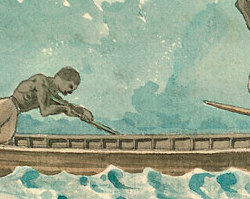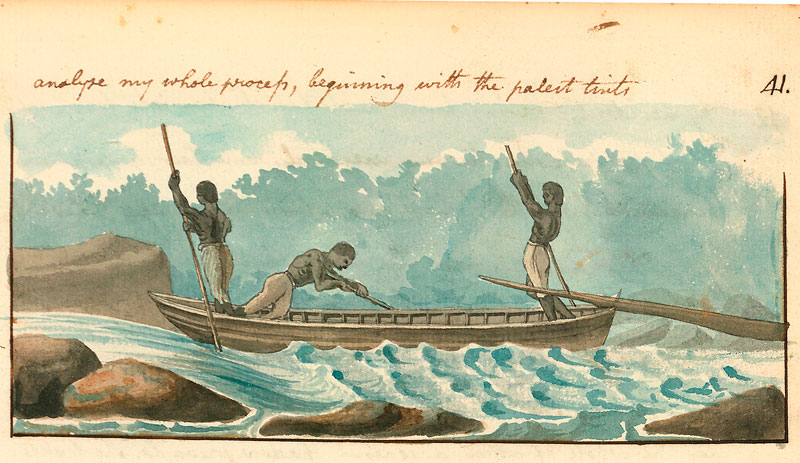THREE SLAVES STEERING A BATEAU, 1798, WATERCOLOR
This watercolor painting by Benjamin Henry Latrobe depicts three African American men, probably slaves, directing a bateau, a long flat-bottomed boat, through the rapids of the James River at Richmond. The boats were used to carry goods such as tobacco and coal along rivers and canals as late as the twentieth century. In the journal where he painted this picture, Latrobe noted that the illustration was inaccurate. The boat was "too short: they are from 60 to 75 feet long, & from 5 to 6 feet broad." Of the boats he wrote, "Each [bateau] is managed by 3 Men, who with great dexterity often carry them 30 miles against the stream in one day."

Latrobe was born in England in 1764 and worked for the famous engineer John Smeaton and architect Samuel Pepys Cockerell before immigrating to the United States. Latrobe lived in Virginia for several years where he designed the Virginia State Penitentiary (now demolished). Later he became one of the young nation's most significant architects. The Bank of Pennsylvania, the Baltimore Basilica, and the United States Capitol are prominent examples of his designs. His journals and accompanying illustrations are excellent sources for the Virginia landscape and culture at the turn of the eighteenth century. According to Latrobe's journals, he shared the conflicted feelings of many upper-class Americans at that time. He found the institution of slavery distasteful and perhaps morally repugnant, but he also believed in the inferiority of people of African descent. Latrobe acquired a slave in 1804, and he emancipated the boy at the age of sixteen in 1813 on the condition that he should remain an indentured servant. (source: Virginia Memory)


No comments:
Post a Comment